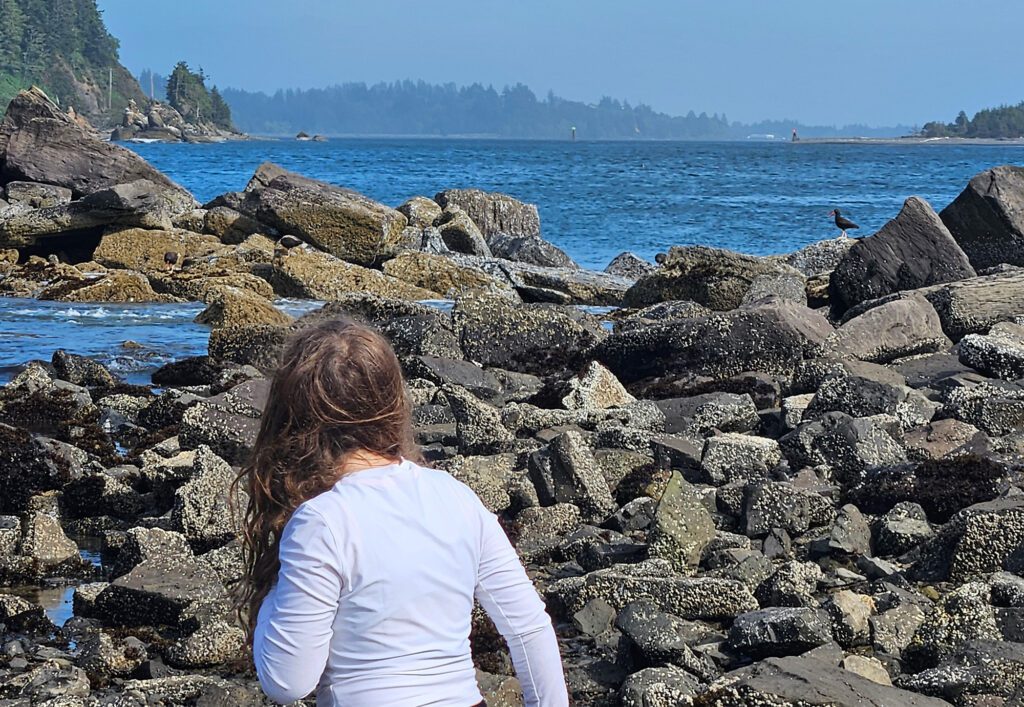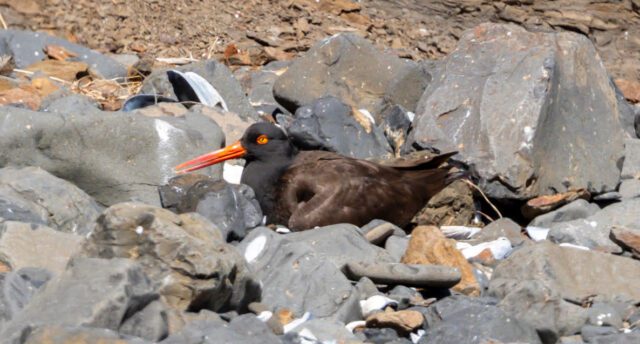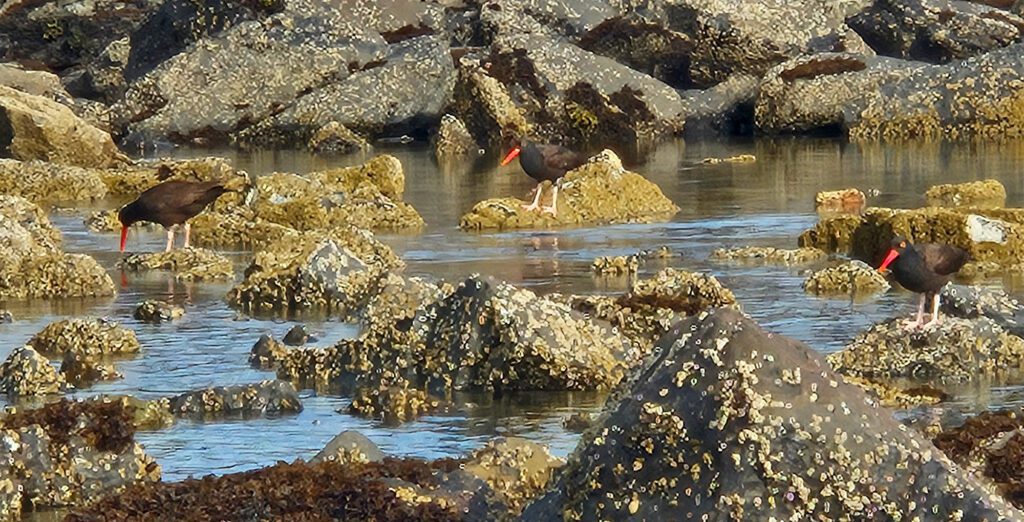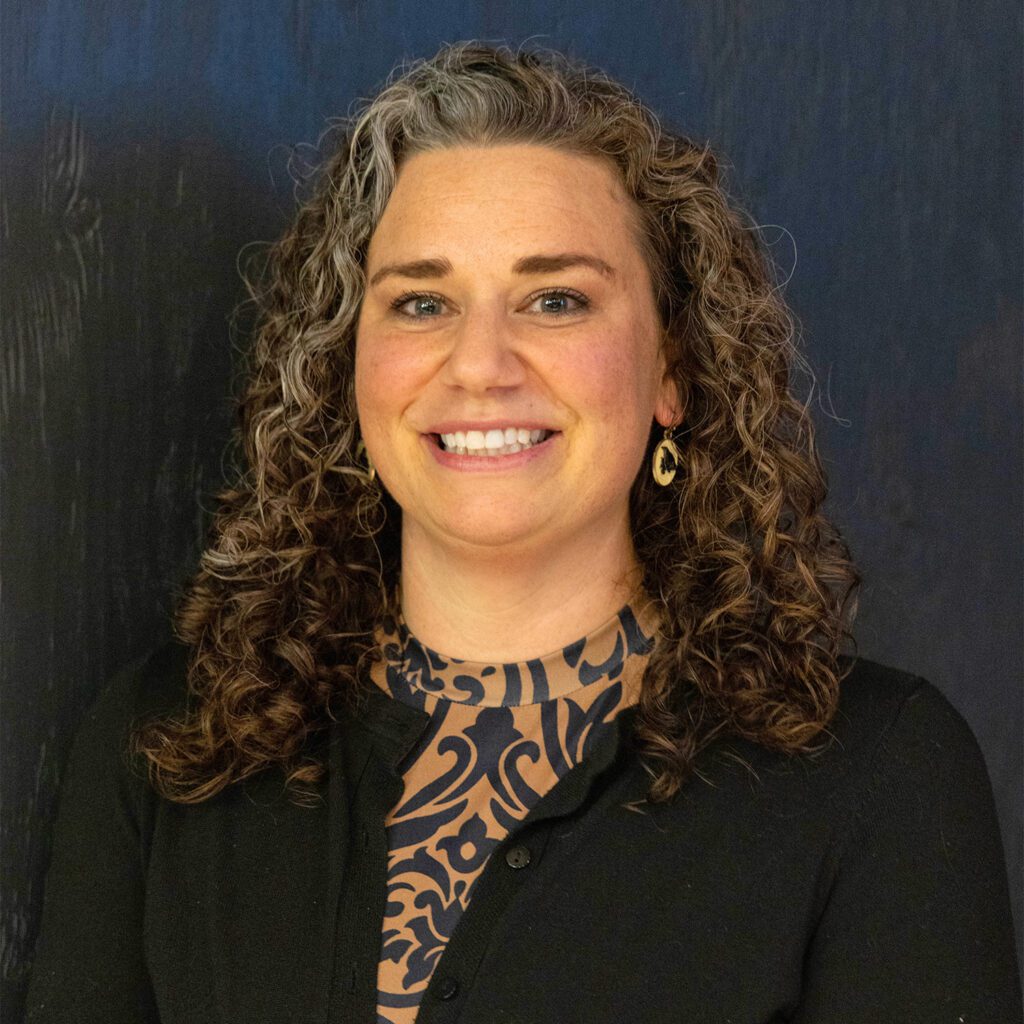Tillamook Coast Life Blog
Conservation with Nesting Tillamook Shorebirds
It’s midday, about an hour before low tide. The wind is light, the temperature mild. I scramble down rocks to reach the shore. My destination? Three Graces in Barview, OR. My purpose? To find nesting Black Oystercatchers, make observations, and collect data.
Saving Our Shorebirds
Oregon is home to 362 miles of coastline, spanning from Astoria to the north down to Brookings in the south. All along the coast, shorebirds nest in a variety of habitats — rocky intertidal spaces, towering cliffs, offshore grassy rocks, and even sandy dunes. There are many organizations that work together to protect and study our shorebirds, but my current quest in shorebird conservation has led me to the Bird Alliance of Oregon. This is the 10th year that they have been tracking Black Oystercatcher nests along the Oregon coast, and each year they depend on trained volunteers to monitor sites all along the 362-mile stretch.

Beguiling Black Oystercatchers
The Black Oystercatcher Monitoring Project has had a decade of success in monitoring nests, collecting data, and tracking trends. The work is focused mainly around Oregon’s five marine reserves, although volunteers track nests anywhere they have been located. Tillamook County is bordered by Cape Falcon Marine Reserve to the north and Cascade Head Marine Reserve to the south. These are spaces in which fishing and human foraging activities are limited or prohibited in order to protect habitat for our marine species.
Black Oystercatchers don’t need much, but they do need access to rocky shore habitat in order to forage for food and build their nests. Lucky for us, 41% of Oregon’s coastline has been classified as “rocky shore.” Bring on the Oystercatchers!

These birds are delightful. They appear mostly blackish with a striking red-orange bill and a yellow eye encircled in red. It gives them a loveable, albeit “derpy” look and once you spot them, you know you are looking at something special. They use their long beak to dig between rocks at low tide and eat all types of tidal creatures — crab, mussels, snails, and marine worms to name a few. Often, you will hear them before you see them. Their call is a high pitched whistling sound that is hard to ignore.
A Coast that Cares
Some wonder what’s the point of all of this effort? Bird Alliance of Oregon has stated that Black Oystercatchers are a species of “conservation concern,” with a small overall global population of less than 10,000 individual birds. They are also more susceptible to human interference, whether that’s nest disturbance by people, oil spills, or climate change.
We want Black Oystercatchers to make the Oregon Coast their home because their presence on the coast is a strong indicator of intertidal health. Also, just look at them! Of course we want to protect them and their charming little faces!

Coastal Conservation
Data over the past 10 years has shown steady trends of nests, chicks, and successful fledgings along the Oregon coast, with the north coast doing especially well with productive nests. This information is vital because it advises us about overall health on our coastline. If the Black Oystercatchers stop nesting, it could be a sign that we have much bigger issues to contend with, such as a decrease in water quality and lack of biodiversity, which in turn can lead to less species calling the Oregon Coast home. Changes like these could result in issues such as the loss of commercial and recreational fishing and clamming for our locals and tourists. The Bird Alliance of Oregon is leading the way on really important conservation work right outside our door.
Back at the shore, I tiptoe over rocks, careful to not disturb the tiny barnacles and other creatures who call the tide pools home. I’ve trained my binoculars on the Three Graces, searching each and every rocky ledge for potential nest sites. As instructed, I monitor for at least 30 minutes to find any evidence of Black Oystercatchers. Today doesn’t feel like my lucky day. My eyes haven’t spied any confirmation that Black Oystercatchers are nesting here. Slightly defeated but still optimistic, I turn to head back to my vehicle. Then, from seemingly out of nowhere, I hear it — the high pitched squeak and the stuttering, excitable WHEEEEEEEE. Black Oystercatchers are here, somewhere!

I search and search but cannot find the source of the call. Although I didn’t find the birds or the nest, I still consider today a success. I am grateful for the opportunity to support conservation efforts along the Oregon coast. I will be back again for more Black Oystercatcher action in a few days when I can hopefully lay eyes on a nest, ideally filled with eggs or maybe even young Black Oystercatchers. What a way to spend an afternoon!

